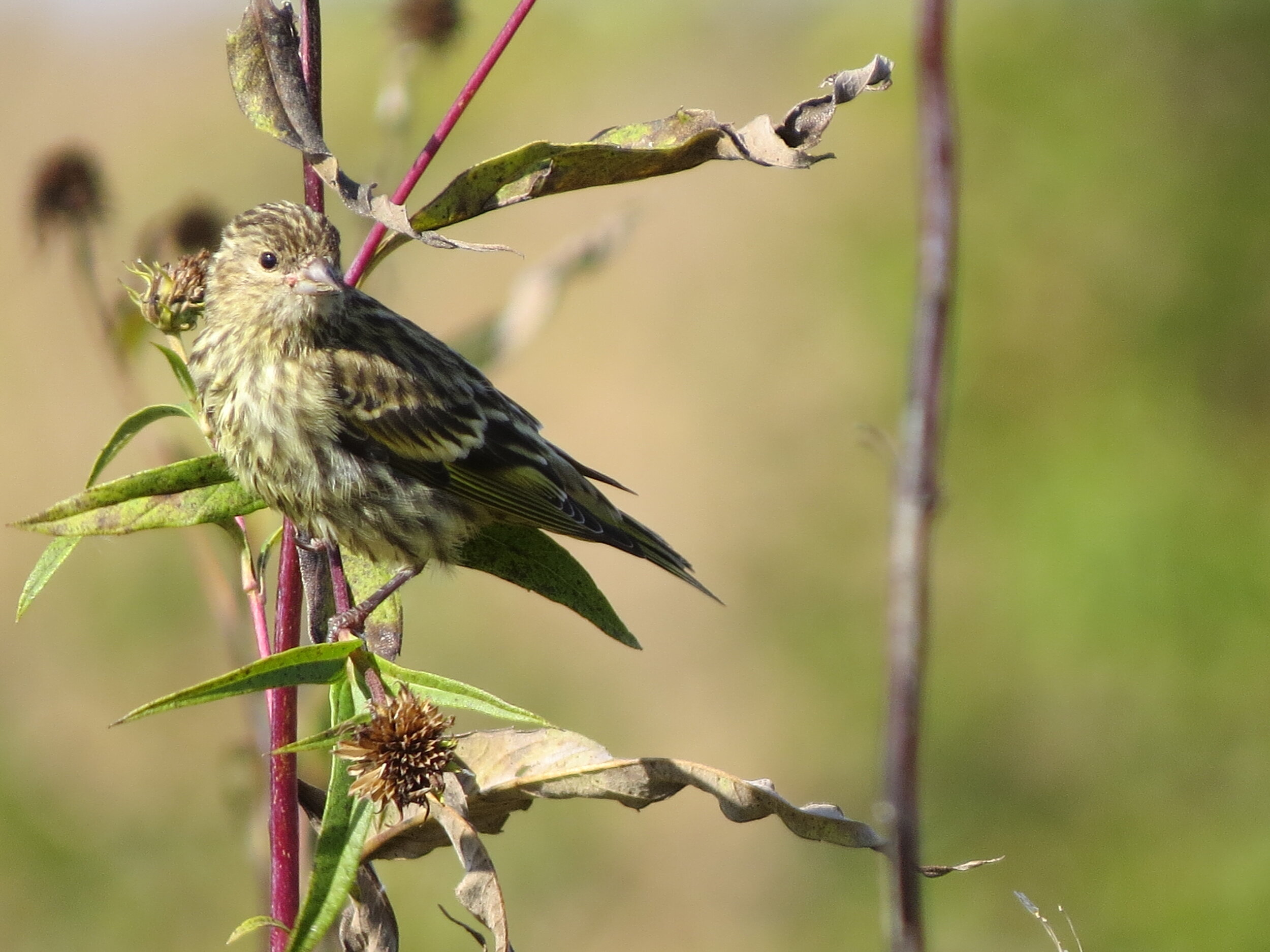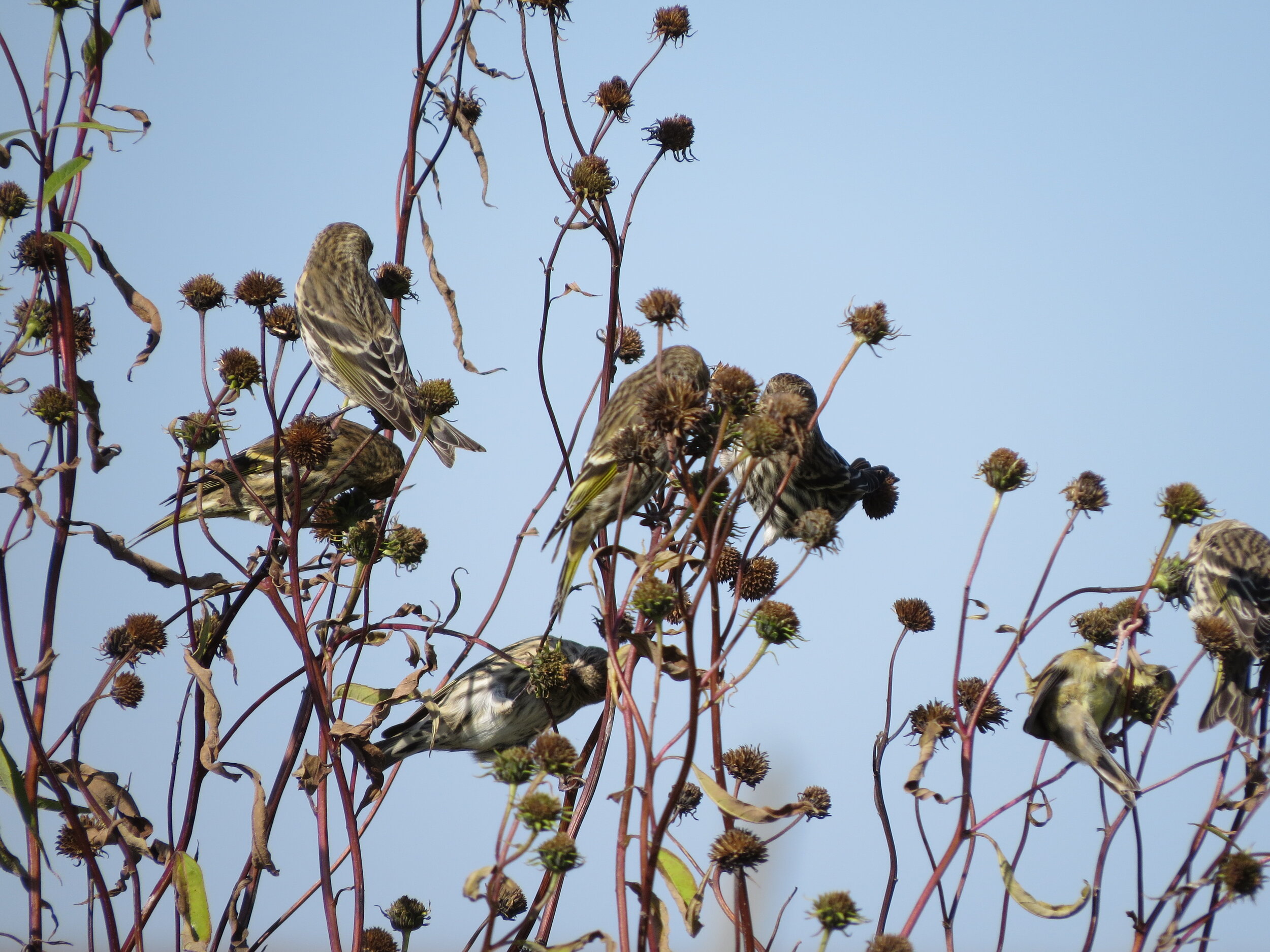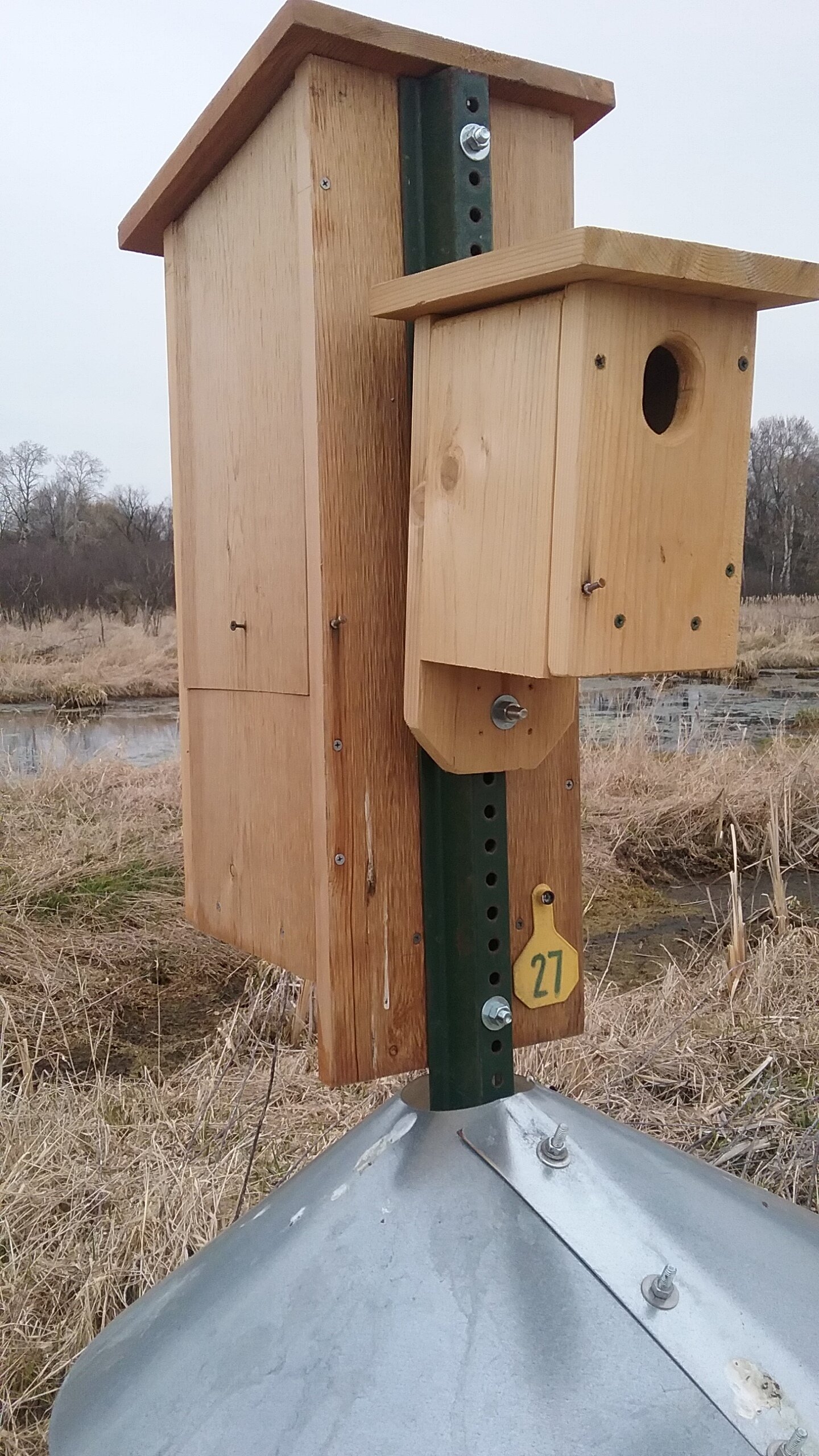Sam Robbins wrote in 1991 Wisconsin Birdlife “The most spectacular flight ever recorded for the unpredictable Pine Siskin in Wisconsin occurred on 21 October 1969, when Dan Berger estimated that over 50,000 small finches passed by the Cedar Grove Ornithological Station in Sheboygan County. There were some Common Redpolls, American Goldfinches, and Purple Finches among them, but most of the birds were Pine Siskins.”
In years of major irruption, some pine siskins remain in southern Wisconsin and begin nesting in April. In the recently completed 2015 - 2019 Breeding Bird Atlas II there were reports of pine siskins nesting in southern Wisconsin in 2018 including many observations from Madison.
The Cornell Laboratory of Ornithology provides the following information on Pine Siskins. “Irruptive Pine Siskins' winter movements are erratic and depend partly on the state of cone crops in northern North America. About every other year, Pine Siskins irrupt, or move into central and even southern parts of the continent, but the timing and extent of these movements are extremely variable...Gregarious flocks are constantly atwitter with wheezy contact calls while feeding or during their undulating flight. Pine Siskins sometimes migrate in flocks of several thousand.
Partners in Flight estimates that populations have declined by 80% since 1970 and they estimated global breeding population is 38 million. The Pine Siskin rates a 10 out of 20 on the Continental Concern Score and is considered a Common Bird in Steep Decline. Dense flocks of Pine Siskins seem particularly vulnerable to outbreaks of salmonella transmitted at feeders (more on feeder maintenance). Loss of habitat from forest-clearing may be balanced by new commercially planted coniferous forests, and by the Pine Siskins willingness to nest in shrubs and ornamental trees.
As their name suggests, Pine Siskins have a fondness for the seeds of pines and other conifers like cedars, larch, hemlock, and spruce. Pine Siskins flit about in the topmost canopy of seed-bearing trees. They'll often cling upside down to branch tips to empty hanging cones of their seeds.

















